the cultural
Ramman Festival: A UNESCO Cultural Heritage of Salur Dungra
Nestled in the scenic valleys of Uttarakhand, en route to the sacred Badrinath Dham, lies the humble village of Salur Dungra. This picturesque village, located near Joshimath, comes alive every year with the vibrant and culturally rich festival of Ramman. Celebrated annually in April, Ramman has been recognized as a UNESCO World Cultural Heritage since 2009, reflecting its unique blend of religious fervor, artistic expression, and communal harmony. Though other villages like Dungri, Bharosi, and Selong also celebrate this festival, it is the Ramman of Salur Dungra that stands out, both in grandeur and significance.
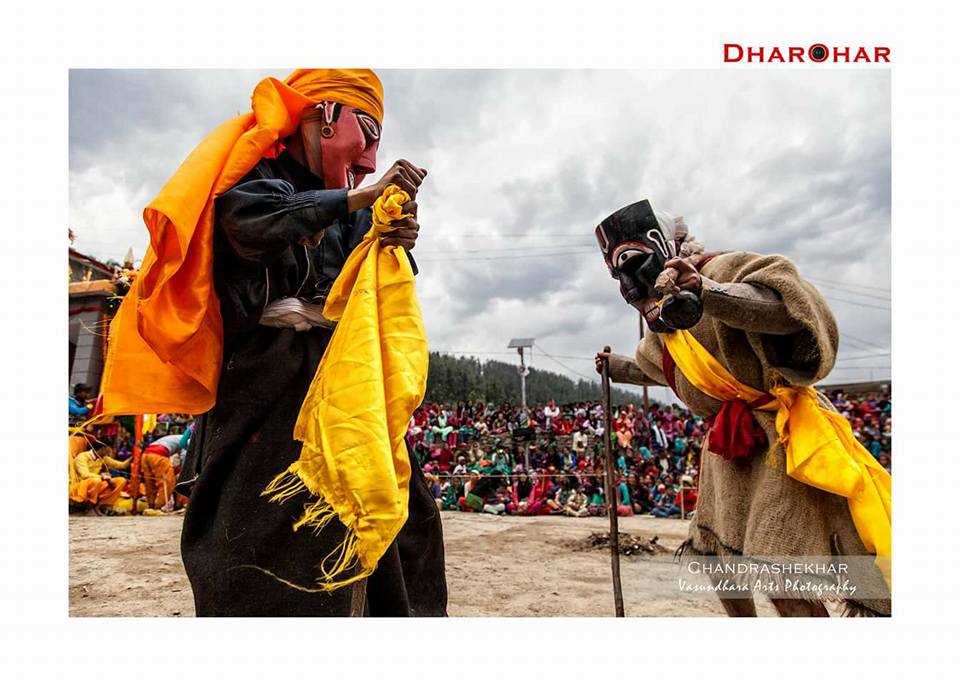
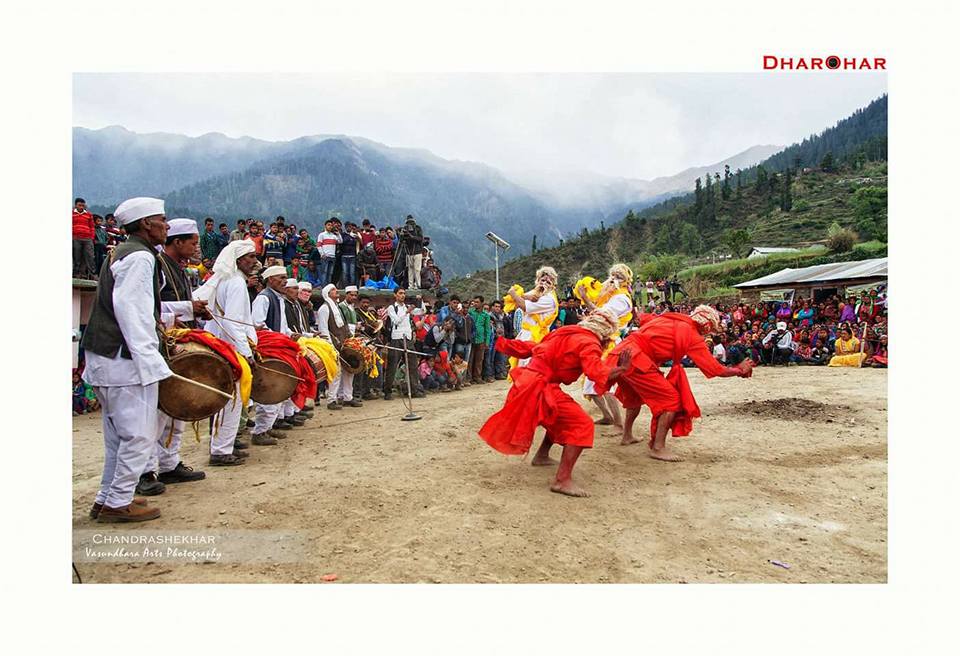
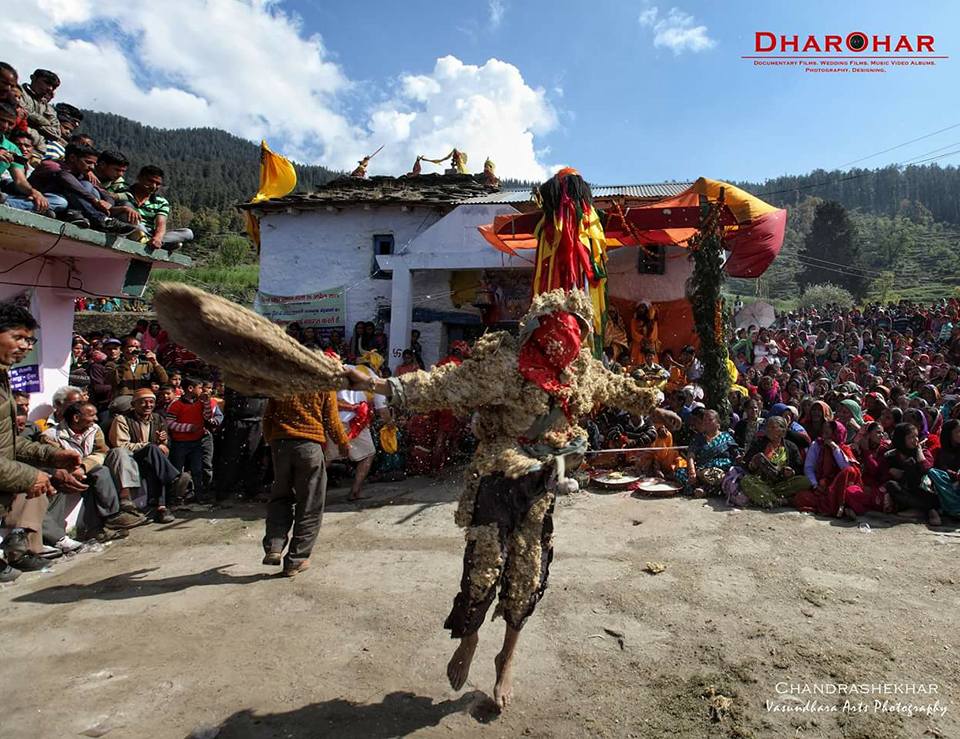
Origins and Meaning of Ramman
The word Ramman derives from the great Indian epic, the Ramayana. On the last day of the festival, several scenes from this legendary tale are enacted, thus lending the event its name. It is an amalgamation of the epic's stories with the ancient mask dances of the Himalayas, forming a unique cultural celebration. What began as a local religious event has now grown into a fortnight-long festival that brings together the entire community.
A Cultural and Religious Extravaganza
Ramman is much more than just a festival; it is a series of cultural events, community prayers, and religious rituals that bind the people of Salur and surrounding villages together. The festival is dedicated to the Bhumyal Devta, the village deity considered the guardian of the lands. The festival begins on Baisakhi, the first day of the month of Baisakh, with the worship of the deity.
The idol of Bhumyal Devta is placed atop an eleven-foot-long staff, beautifully adorned with colorful silk, carried by a performer who dances with the staff held high. This marks the spiritual core of Ramman, but the festival also features elements of entertainment, family reunions, and the arrival of guests, making it a lively and joyous occasion.
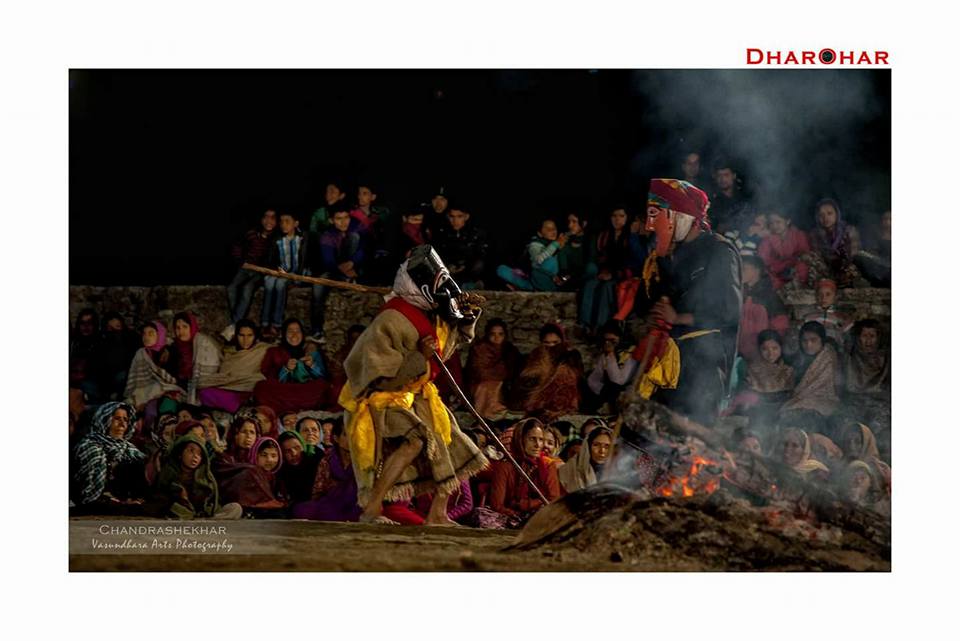

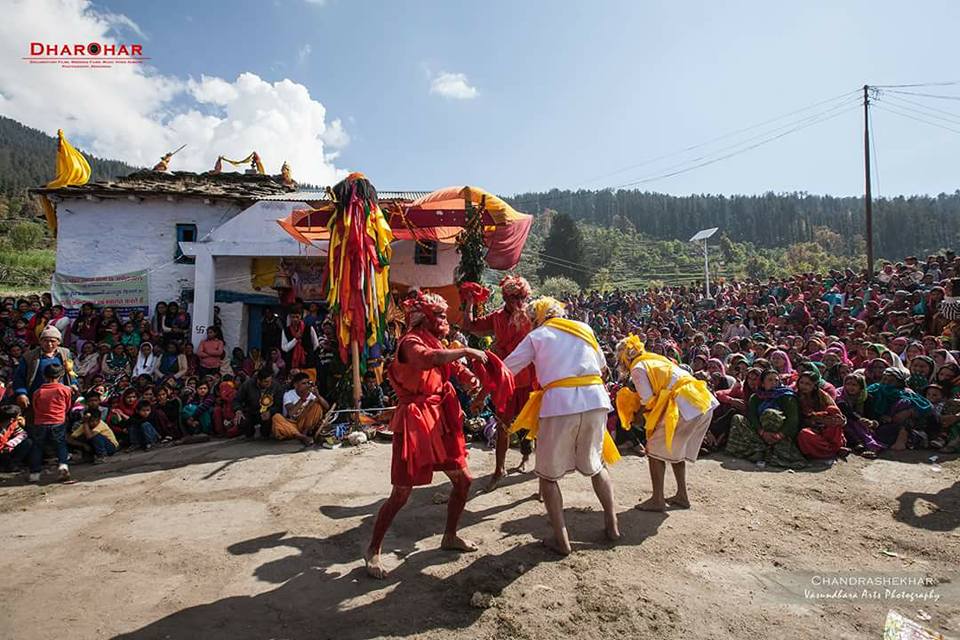
Rituals and Performances: A Glimpse into Tradition
From the third day of Baisakh, the Bhumyal Devta's idol begins its journey across the village, visiting different households. Alongside this religious procession, the village witnesses nightly performances of mask dances at the temple premises. These wooden masks represent a variety of legendary, historical, and imaginary characters, divided into two categories: Dayo Pattar (masks representing gods) and Khyalari Pattar (masks for entertainment purposes).
The first mask dance, performed on the third night of Baisakh, honors the Sun God. The same night also features performances of Kalinka and Ganesha. On subsequent nights, more mask dances take place, each with its own significance: Rani Radhika, a dance associated with Lord Krishna and Radha, the tale of the King of Kangra, and even the comical story of a merchant, his wife, and a thief. The mask performances have a fixed sequence, ensuring that every night is filled with different characters and stories, offering both entertainment and spiritual meaning.
One of the most unique performances is the “Gopichand” dance, which takes the audience on a mystical journey through history and imagination. These nightly performances continue until the final night before Ramman, known as ‘Syurtu’, or the all-night performance. On this special night, every character and mask dancer participates, including the Pandava Nitya, a dance honoring the Pandavas from the Mahabharata. This night also marks the selection of the characters who will play Rama, Lakshmana, Sita, and Hanuman in the Ramman performance.

The Grand Finale: Ramman
On the last day of the festival, Ramman culminates in a spectacular enactment of selected scenes from the Ramayana. The performance takes place in the courtyard of the Bhumyal Devta temple, beginning with the birth of Ram and Lakshman. Scenes such as Sita Swayamvar, Ram Vanvas (Exile), the Golden Deer Hunt, and the iconic Sita Haran (Abduction of Sita by Ravana) are brought to life in the form of a mesmerizing mask dance. The tales conclude with Hanuman’s meeting with Rama, the burning of Lanka, and the final Rajtilak (coronation of Rama).
Every scene is performed with grace, rhythm, and precision to the beat of traditional dhol (drums), showcasing a mesmerizing interplay between music and dance. The Ramyanis (performers of Ramman) take short breaks between scenes, while historical and mythical characters such as Mor-Moryan, the Merchant and Wife, and the Maal (Warriors) entertain the crowd.
Myth, History, and Entertainment
In addition to the Ramayana performances, Ramman features a host of other characters, each with its own significance. The Maal (Warriors) mask dance, for example, re-enacts battles between local warriors and the Gorkha warriors during the period of 1804-1814. The performance includes warriors armed with swords and guns, culminating in gunshots that symbolize the local victory over the Gorkhas.
Among the other memorable characters is Kurujwogi, a performer covered in sticky, thorny flowers who playfully throws these flowers into the audience. The performance also features the Narsinga Pattar, which tells the story of Lord Narsinga in dance form.
The festival concludes with a final performance by the Bhumyal Devta, marking the end of the fortnight-long celebration. Notably, no dialogues are used in the entire festival; the stories are told through the powerful medium of dance and music, preserving the oral traditions of the region.
The Legacy of Ramman
Ramman is not just a festival; it is a living heritage that showcases the deep-rooted cultural, spiritual, and social traditions of the Himalayan people. It’s a time for the village to come together, for families to reunite, and for the community to celebrate their collective heritage. Recognized by UNESCO for its cultural significance, the Ramman Festival continues to be an extraordinary example of intangible cultural heritage, preserving the unique traditions of Uttarakhand for future generations.
#SalurVillage #Joshimath #GarhwalCulture #HimalayanTraditions #BhumyalDevta #GarhwalFolkDances #UttarakhandCulture #MaskDance #IndianTraditions #RammanFestival #SalurFestival #UNESCOHeritage #UttarakhandFestivals #FolkFestival #CulturalHeritage #RammanInSalur #RammanMaskDance #IndianFolkCulture #HimalayanFestivals #TravelUttarakhand #ExploreHimalayas #CulturalTravel #IndianFestivals #TravelIndia #OffbeatDestinations #FestivalsOfIndia #UttarakhandTourism #IncredibleIndia #HimalayanVillages
